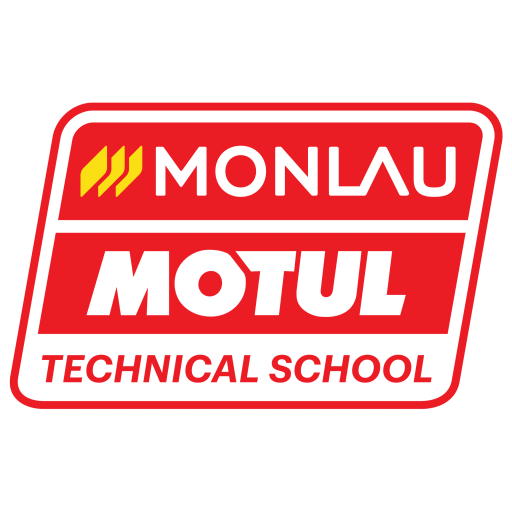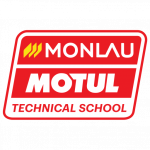Motorsport Engineering MSc Race Motorbikes
Professional motorcycling is a very demanding industry that requires total commitment from everyone involved inside and outside the box. As professional riders are constantly training and preparing themselves for a successful championship, engineers and technicians have to act in the same way and in parallel, with the same working method and knowledge.
Objetive
We will teach you the experience that a specialized Motorsport engineer has in their day to day. You will enter inside a box and you will know its language and interpretation of motorsport.
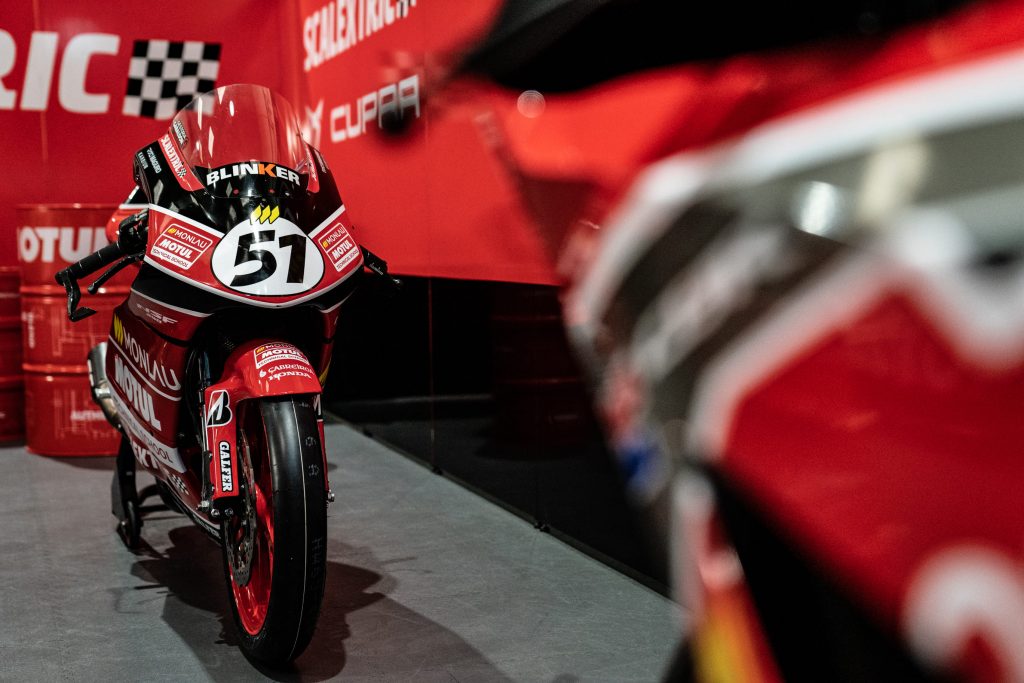
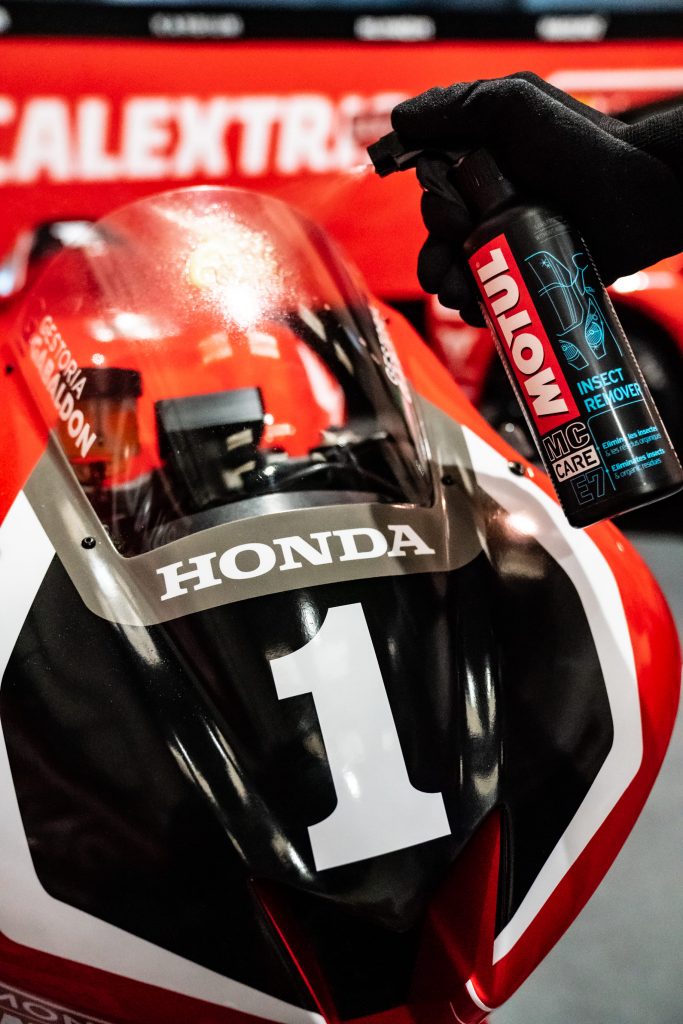
High level training
A staff of teachers, active technicians and with extensive experience, who develop their professional life on the circuits, competing in national and international championships
1. Be passionate about Motorsport.
2. Choose the Msc option you prefer, “Sign up”, complete the registration process and we will send you the access codes.
3. Enter with your student user and enjoy a new learning experience that will be of great help.
Take as much time as you need. Organise your calendar and enjoy the different modules programmed in the Msc of your choice.
Price: 2.300€
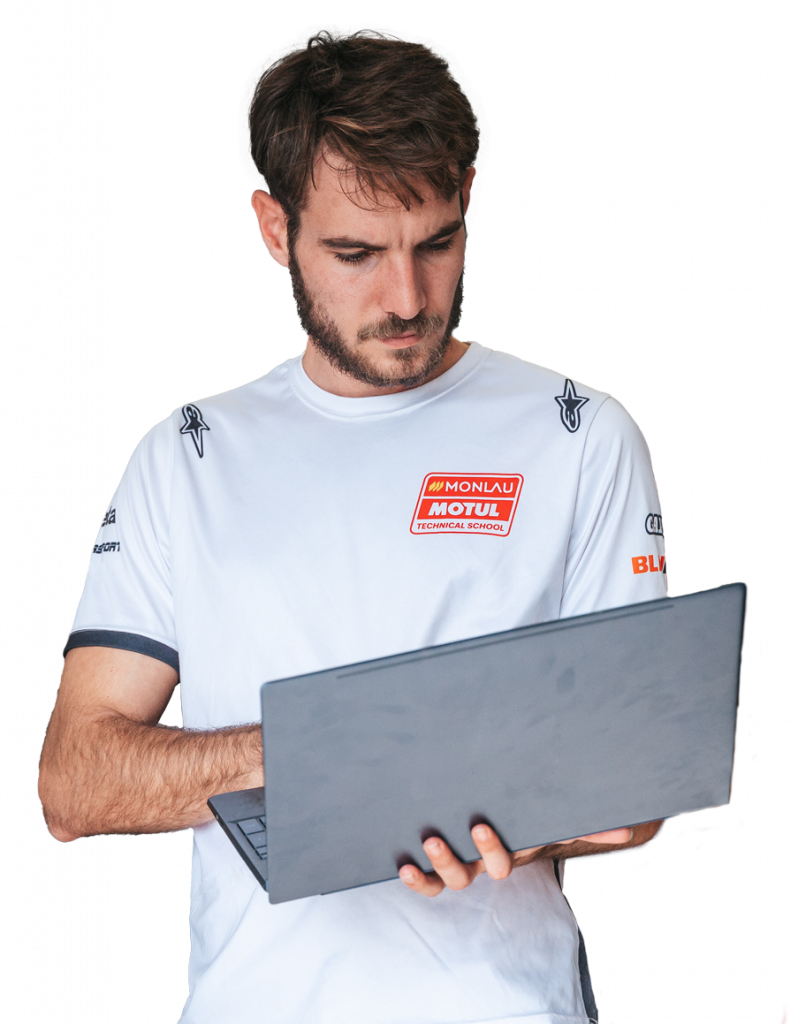
Download the informative pdf to know all the details of the master
In this introductory module you will learn and enjoy about the history of motorsport from its beginnings to the present day. In addition, we will look at the different FIA and FIM organisations and categories that exist and have existed. You will have some of the sporting regulations that have existed This first module will serve to put us in a situation and to acquire culture in this exciting world.
Thanks to this module you will discover what the current structures are like within a Motorsport team of which one day you could be a member. This module will help you to know in detail what are the tasks of the main members of a team.
In this module we will look at the parts that make up a racing motorbike, specifically a moto3. This module will serve you as a glossary to identify all the elements and to know their main function.
In the world of motorsport it is very important to know and interpret how the rider feels on the bike. The confidence that we can give you will be a key point. Therefore, this module will show the different aspects of setting and how they physically affect the behaviour of the bike.
Understand the basic concepts of the race motorbikes dynamic. Get into the race motorbikes behaviour on the race track.
- General race motorbikes geometries.
- Front direction and traction geometries.
- Suspension geometries.
-Mass, mass distribution, inertias and gyroscopic effects.
- Front and rear suspension characteristics.
- Race motorbikes tyre characteristics.
- Brakes.
Racing motorbikes are equipped with a series of electronic components that allow us to have objective samples of what is happening on the track. We will see which components can monitor and how to use one of the most used systems in circuits such as the 2D program, as well as different examples that will help us to learn how to read and interpret the data.
Get the knowledge of the data acquisition system 2D on hardware and software side. Understand the different sensor and its use. Get into the race motorbikes analysis of the data’s.
- Data acquisition system and its use.
- Targets of the data acquisition system.
- Hardware system: analogical and digital sensors, wiring loom and loggers.
- Installation of the system on the race motorbikes.
- Software system 2D. - Different channels introduction: basics, specific for the engine and frame acquisition.
- Different channels for 2 and 4 stroke.
- Calibrations, Boise, filters and calculations.
- Way of work to set up and optimize the race motorbikes on the race track.
- Optimization of the 2 and 4 stroke.
- Optimization of the chassis performance.
To achieve the best time and be the fastest, speed and power are not enough. The braking variant can be decisive during a race. In this module we will see the parts that make up a braking system, the different problems that we may have, and their solution. As well as perform an optimal braking calculation.
- Brake system description, components, functionality and characterization.
- Brake balance calculation and sizing of brake components.
- Description of main brake problems and solutions proposed.
- ABS and brake by wire system
description.
The suspension elements take on a special importance for the dynamics of our vehicle and consequently for its performance on the track. In this module we will seeat the different parts and types of shock absorbers which will help us to better understand the dynamics of our vehicle.
- Working principles of common shock absorbers.
- Shock absorber characterization on dyno.
- Springs, helpers, bump rubbers and its combination and interaction on vehicle setup.
- Natural frequency and damping coefficient calculation and choice depending on conditions.
- Hydraulic adjusters, working principles
and effects on vehicle dynamics.
In single-brand competitions where the same motorbikes are raced, a differentiating factor is the condition and preparation of the engine. In this module we will look at a real example of preparation that will help you to see the key points to improve the engine performance.
To distinguish the differences between 2 and 4 stroke engines. Get the knowledge of a 2 stroke racing engine. Get knowledge of 4 stroke racing engine. Know the transmission system of the motorcycle power train.
- Principals of 2 and 4 stroke.
- 2 stroke racing engines.
- 4 stroke different racing engine configurations.
- Intake analysis.
- Lubrication, fuel pump and refrigeration systems.
- Engine balancing.
- Gear box system, gears and shifter mechanism.
- Clutch system.
- Generators, electronic management and ECU systems.
Good lubricant and fuel conditions will affect the final performance of your vehicle. In this module we will explain what types of lubricants exist and how they will help us to make the best choice for our racing vehicle.
- Motul partnership.
- Race fuel and lubricants fabrication, chemical composition, main features analysis and its effect in race engine performance.
- Fabrication, homologation and logistics
to supply in racetracks.
This module extends the concepts of the aerodynamics block. In this case we will focus on the Aero maps and look at an example of a calculation to achieve an optimal aerodynamic balance.
Main principles of aerodynamics and fluid dynamics. To obtain an overview of aero concepts and body interaction. Knnowledge of aerodynamic formule and its application.
- Bernoulli’s equation.
- The boundary layer.
- Lift and drag coefficients.
- Principles of aerodynamics and fluid
dynamics.
From the engine to the wheel there are many parts that come into play and sometimes they are the ones that will allow us to have better speed or acceleration. In this module we will look at the different parts of the transmission and discover the key points to be able to choose one gear relationship or another.
- Gear ratios calculation depending on weather conditions, track characteristics and race strategy.
- Its effect on driving style and engine
performance: power and torque.
Motorsport uses a wide range of materials to manufacture parts. The choice of materials for the different elements is not arbitrary. In this module you will learn what features each one has and the performance they can offer in Motorsport.
General overview of the materials used
in motorsport. Learn how to choose the
correct material for a given element or
how to distinguish them. Know the basic
properties of each material.
- Properties of the materials.
- Physics
- Mechanicals
- Classifications of the materials.
- Metals.
- Ceramics.
- Polymers.
- Semiconductor.
- Compounds.
- Analysis race motorbikes needs.
- Analysis of the needs.
- Actual design.
- Welding process.
Frequent questions
- Short lessons so you can learn on the go, on any device, anywhere. No more than 20 minutes a day.
- You will have a very easy to use and intuitive platform to follow the program.
- Each time that you finish a class, the next class will be unlocked. So you can go through the program at your own pace.
- You will have a community where you can share, contribute, ask questions and most importantly, connect with people like you.
- You also have downloadable material in each block to support the classes and expand as far as you need to.
- They are approved by our own experience of our own institution Monlau Motul, for our more than 20 years training future professionals. We want our courses to be dynamic, we constantly update them according to the latest technical developments and therefore we do not want to lose flexibility.
- All our courses are recognized by the Real Spanish Automobile Federation and the Real Spanish Motorcycling Federation.
Our masters have the balance to help from junior profiles with no experience, to professionals with years of experience in their sector. It is good for all of us to update ourselves and learn new concepts. All with a common denominator: his passion for Motorsport.
-
Yes. The programme is made up of videos and additional study resources in text: summaries, templates, pdfs, etc.
-
From a PC or laptop, tablet or mobile phone. Any digital device with internet access. The ease that our courses give you will make learning as easy and intuitive as possible. Wherever and whenever you want.
Of course, at the end of the course or modules you choose, we will send you a diploma certified by Monlau Motul and recognized by the Real Cars Spanish Federation and the Real Motorbikes Spanish Federation.
